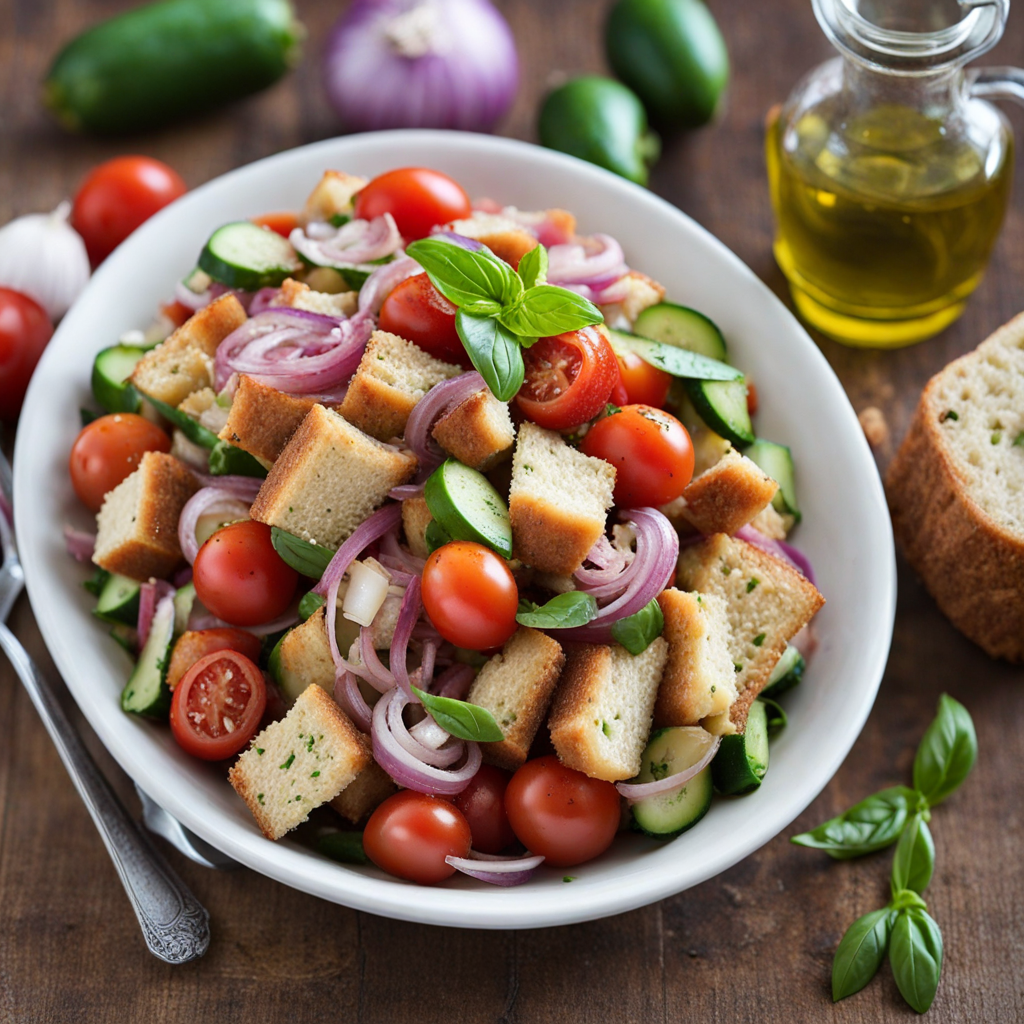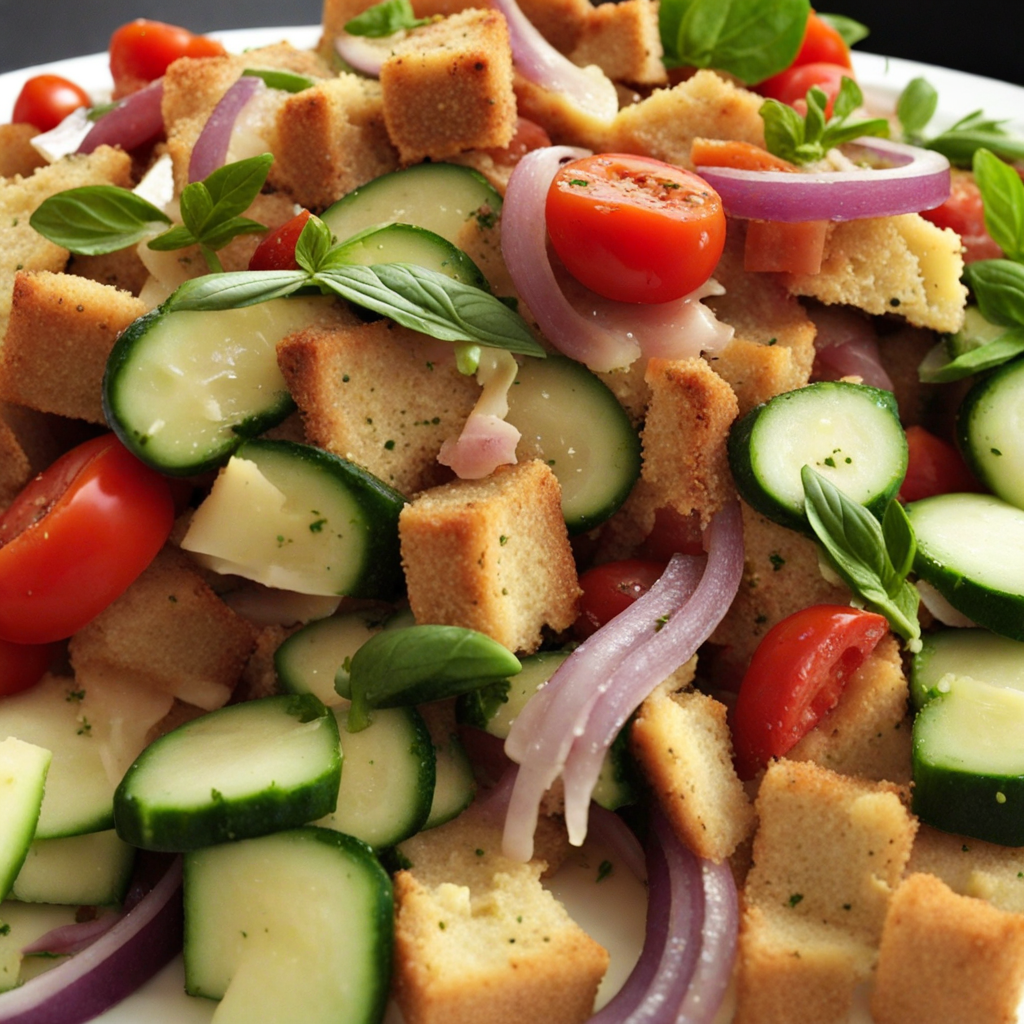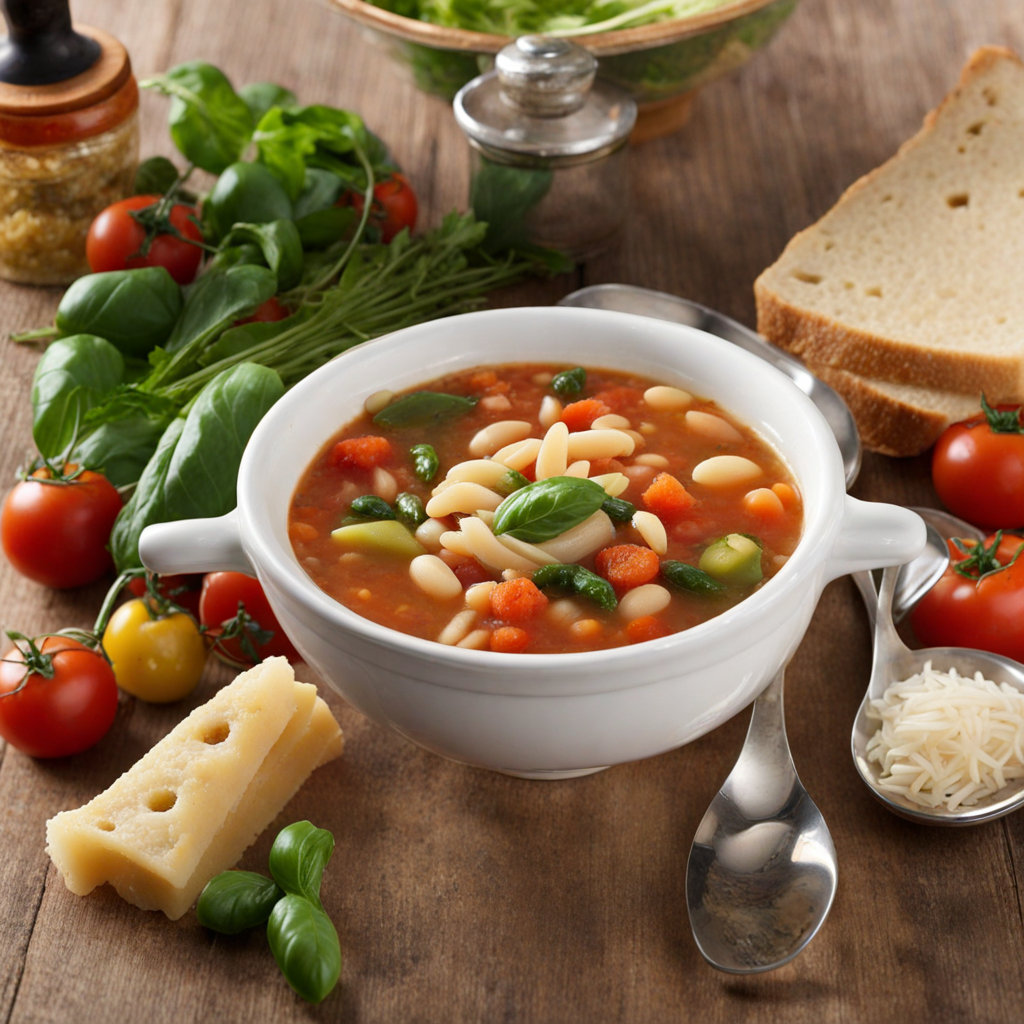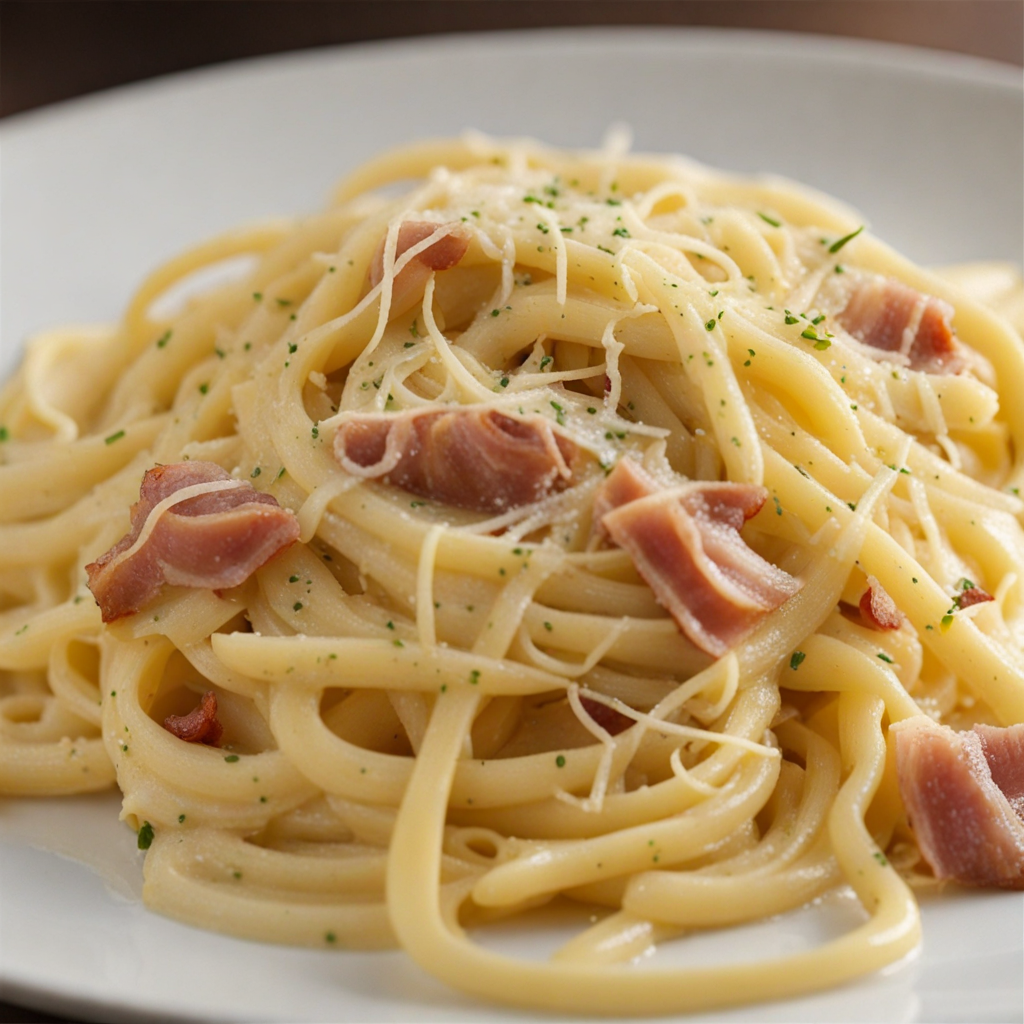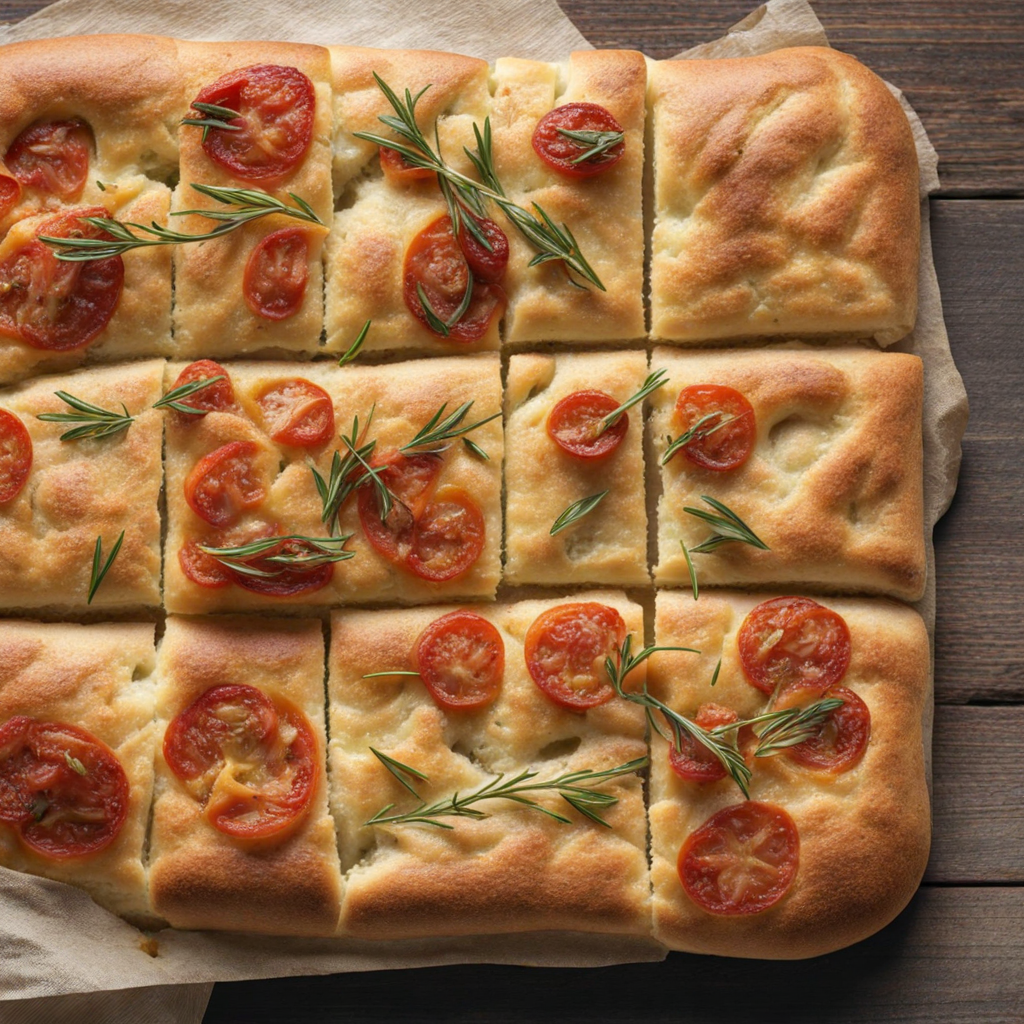Panzanella
Panzanella is a vibrant and refreshing Italian salad that celebrates the rustic flavors of summer. Traditionally made with stale bread, this dish transforms leftover crusty loaves into a delightful medley of textures and tastes. The bread is typically torn into bite-sized pieces and soaked in a mixture of ripe tomatoes, cucumbers, red onions, and fresh basil, allowing it to absorb the juices and flavors of the vegetables. The result is a harmonious blend where the doughy bread becomes imbued with the essence of the fresh produce, creating a satisfying and hearty dish that captures the essence of Italian home cooking. What sets Panzanella apart is its simplicity and reliance on high-quality, seasonal ingredients. The tomatoes, often the star of the dish, should be at their peak ripeness, bursting with flavor and sweetness. The addition of extra virgin olive oil and a splash of red wine vinegar enhances the salad, adding depth and a touch of acidity that balances the richness of the bread. Fresh herbs like basil or parsley can elevate the dish further, infusing it with aromatic notes that complement the bright, fresh flavors of the vegetables. As you enjoy Panzanella, you'll experience a delightful interplay of flavors and textures: the chewiness of the bread, the juiciness of the tomatoes, and the crunch of cucumbers all come together in every bite. This dish embodies the essence of Italian cuisine, where simplicity meets quality, allowing each ingredient to shine. Whether served as a side dish or a light main course, Panzanella is a perfect way to savor the tastes of Italy, bringing a taste of summer to your table, no matter the season.
How It Became This Dish
Origin of Panzanella Panzanella is a rustic Italian salad that beautifully embodies the essence of Tuscan cuisine. Its origins can be traced back to the central region of Italy, particularly Florence and the surrounding areas. The dish is believed to have emerged during the Renaissance period, roughly in the 15th century. As with many traditional dishes, Panzanella reflects the resourcefulness of the Italian peasantry, who sought to minimize food waste during times of scarcity. Originally, Panzanella was a simple preparation made primarily from leftover bread and vegetables. The use of stale bread was not only practical but also a way to honor the agrarian lifestyle that characterized much of rural Italy. Florentine peasants would soak leftover bread in water, then squeeze it dry and mix it with whatever fresh vegetables they had on hand, typically including tomatoes, onions, and cucumbers. This combination allowed them to create a filling and nutritious meal from otherwise discarded ingredients. Cultural Significance Panzanella is more than just a dish; it is a culinary symbol of the Tuscan countryside and the Italian philosophy of “cucina povera,” or “poor kitchen.” This concept revolves around using simple, inexpensive ingredients to create flavorful and wholesome meals. The dish exemplifies the Italian ethos of celebrating local produce and making the most out of what the land provides. The cultural significance of Panzanella extends beyond its ingredients. It represents the communal aspect of Italian dining, where meals are often enjoyed with family and friends. In Tuscany, sharing a meal that includes Panzanella during the summer months can evoke feelings of nostalgia and connection to tradition. The salad is often served as a starter or a side dish, showcasing the region's vibrant produce and the value of seasonal eating. Evolution Over Time As Italian cuisine began to gain international recognition in the 20th century, Panzanella evolved from its rustic roots into a more sophisticated dish. While the core ingredients—stale bread and vegetables—remain unchanged, modern interpretations often include a wider variety of ingredients, such as mozzarella, olives, capers, or even grilled vegetables. This evolution reflects the global influence on Italian cooking, as chefs experiment with flavors and textures that appeal to contemporary palates. The increase in tourism in Tuscany has also played a role in the transformation of Panzanella. Visitors seeking authentic culinary experiences often encounter variations of the dish in restaurants and markets. Some chefs have taken the liberty to incorporate gourmet elements, using artisanal bread, heirloom tomatoes, and high-quality olive oil. These enhancements, while sometimes straying from tradition, have helped to elevate Panzanella's status in the culinary world, allowing it to be celebrated not just as a peasant dish but also as a gourmet offering. Regional Variations While Panzanella is most closely associated with Tuscany, different regions of Italy have developed their own variations of this beloved salad. In some areas, such as Emilia-Romagna, the dish may include ingredients like roasted peppers or croutons, highlighting the local agricultural produce. The addition of vinegar and capers is also common in certain adaptations, which enhances the dish's flavor profile. In coastal regions, seafood might find its way into the mix, creating a delightful contrast between the briny flavors of the sea and the earthy taste of the bread. Such variations showcase the adaptability of Panzanella, allowing it to evolve while still honoring its humble beginnings. Modern-Day Panzanella Today, Panzanella is celebrated not only in Italy but around the world, particularly in places with a strong Italian heritage or a focus on Mediterranean cuisine. It has become a staple on summer menus in many restaurants, where chefs take advantage of the season's bounty. Farmers' markets and local produce stands often provide the freshest ingredients, enabling home cooks to recreate the dish with a personal touch. Social media platforms have also played a significant role in the resurgence of interest in Panzanella, as food enthusiasts share their own interpretations and adaptations of the salad. This visibility has helped to keep the dish relevant in contemporary culinary discussions, allowing it to transcend its rustic origins and appeal to a new generation of food lovers. Panzanella Today The modern interpretation of Panzanella is often seen as a celebration of summer, with its vibrant colors and refreshing flavors. Chefs and home cooks alike embrace the idea of using whatever is in season, making each rendition unique. The salad is now frequently featured in cookbooks, television shows, and food blogs, further cementing its place in the modern culinary landscape. In addition to its culinary appeal, Panzanella also reflects broader trends in dining, including the movement towards sustainability and zero waste. By utilizing stale bread and local vegetables, the dish embodies a commitment to reducing food waste, making it a relevant choice for environmentally-conscious eaters. Conclusion Panzanella is more than just a dish; it is a testament to the ingenuity and resourcefulness of Italian cuisine. From its humble beginnings as a way to use leftover bread to its status as a beloved summer salad, Panzanella has evolved while staying true to its roots in Tuscan culture. Today, it continues to be a symbol of seasonal eating, community, and the celebration of simple yet flavorful ingredients. As it adapts to modern culinary trends, Panzanella remains a timeless dish, inviting everyone to savor the tastes of Italy’s rich culinary heritage.
You may like
Discover local flavors from Italy


